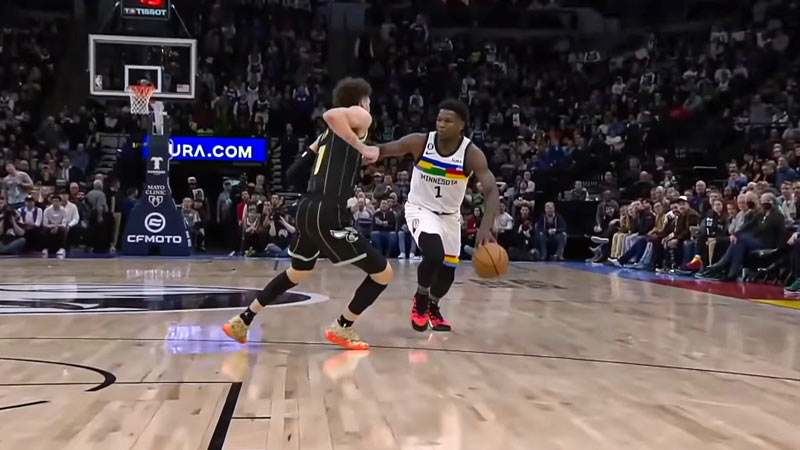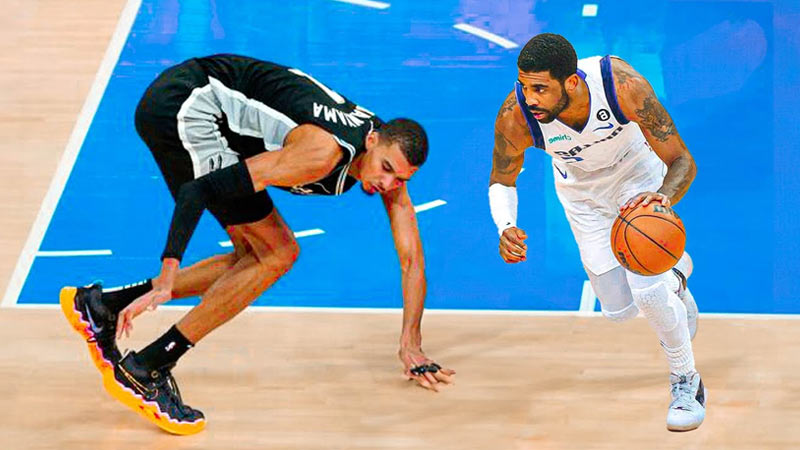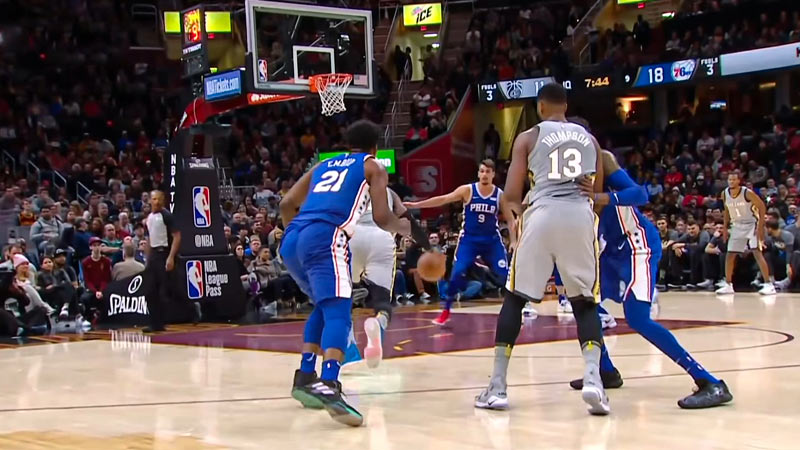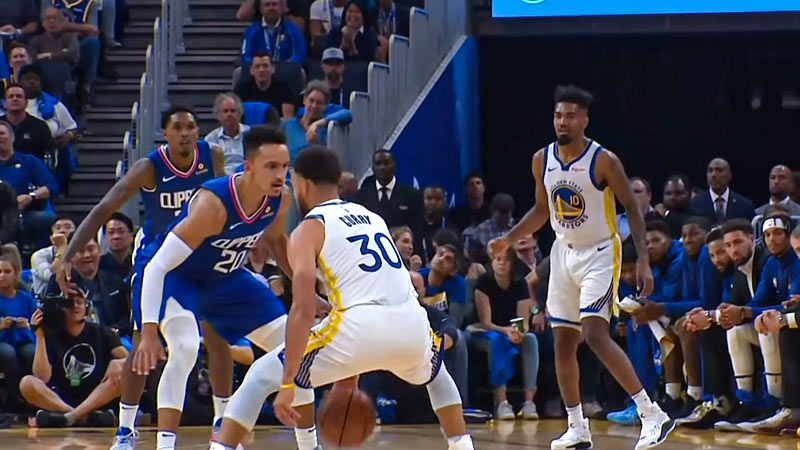In the fast-paced and exciting game of basketball, defense plays a crucial role in stopping the opposing team’s offensive efforts. However, defenders must be mindful of their actions and adhere to the rules to avoid committing fouls.
One common defensive foul that often occurs is “reaching.” In this blog post, we’ll delve into the concept of reaching in basketball, explaining what it entails, why it is penalized, and how players can strive to play effective defense without resorting to reaching.
In this context, we will learn the fact of reaching in extensively. It will be helpful for people who don’t understand the facts properly. So, if you are one of them, please join our discussion to understand the facts as a whole.
What Is Reaching in Basketball?
In basketball, “reaching” refers to a defensive player extending their arm or hand in an attempt to make contact with the offensive player who has the ball. It is generally considered a defensive foul if the reaching results in illegal contact with the opponent.
Reaching is penalized because it often leads to fouls such as reaching-in fouls or reaching-in violations. The defensive player must maintain a legal guarding position and avoid making excessive or unnecessary contact with the offensive player.
Reaching-in fouls occur when the defensive player’s hand or arm makes contact with the offensive player’s arm, hand, or body while attempting to steal the ball.
Reaching-in violations are called when the defender makes a swipe at the ball but fails to make contact with it, resulting in an illegal action.
It’s important for defensive players to move their feet and maintain good defensive positioning instead of relying on reaching to try to disrupt the offensive player.
By staying in front of the offensive player and using proper defensive techniques, such as lateral movement, active hands, and timing, defenders can effectively guard their opponent without resorting to reaching and risking a foul.
What Causes Reaching-in Foul?
Reaching-in fouls in basketball occur when a defensive player makes contact with the offensive player’s arm, hand, or body while attempting to steal the ball. There are several factors that can contribute to reaching-in fouls:
Poor Defensive Positioning

If a defensive player is out of position or is not properly aligned with the offensive player, they may be tempted to reach in to try to disrupt the ball handler. This can lead to reaching-in fouls if they make illegal contact.
Lack of Footwork
When a defensive player lacks proper footwork and fails to move laterally to stay in front of the offensive player, they may resort to reaching to compensate for their positioning. This can result in fouls if they make contact with the offensive player.
Timing and Anticipation
Reaching-in fouls can occur when a defensive player mistimes their attempt to steal the ball. If they reach in too early or too late, they may make contact with the offensive player and be called for a foul.
Overaggressiveness
Sometimes, defensive players become overly aggressive in their attempt to steal the ball and disrupt the offense. This can lead to excessive reaching or swiping at the ball, resulting in fouls.
Defensive Skill and Discipline
Reaching-in fouls can also be caused by a lack of defensive skill and discipline. Players who have not mastered defensive techniques, such as active hands, proper hand placement, and using their body to maintain position, may resort to reaching and committing fouls as a result.
It’s important for defensive players to maintain good defensive positioning, move their feet, and anticipate the offensive player’s movements to avoid reaching-in fouls.
Developing defensive skills, such as proper footwork, timing, and discipline, can help reduce the likelihood of committing reaching-in fouls and improve overall defensive effectiveness.
What Are the Penalties for Reaching in Foul?
The penalties for reaching-in fouls in basketball can vary depending on the specific rules and regulations of the league or competition being played. However, in general, reaching-in fouls result in the offensive team being awarded free throws and/or possession of the ball.
Here are some common penalties associated with reaching-in fouls:
Personal Foul

When a reaching-in foul is committed, it is typically considered a personal foul against the defensive player who committed the infraction.
Personal fouls are recorded against individual players and can contribute to fouls being accumulated on a player. In most leagues, players are limited to a certain number of personal fouls before being disqualified from the game.
Free Throws
Reaching-in fouls often result in the offensive player who was fouled being awarded free throws. The number of free throws awarded depends on the specific circumstances of the foul and the league’s rules.
Typically, the fouled player is given the opportunity to shoot one or more free throws, with the number of attempts determined by factors such as whether the player was shooting or not, the location of the foul, and the team’s foul count.
Bonus Situation
Reaching-in fouls can also contribute to a team entering the bonus situation. In some leagues, once a team has committed a certain number of fouls within a specified period (usually a quarter or half), the opposing team is awarded free throws regardless of the type of foul committed.
Reaching-in fouls can contribute to a team’s foul count, ultimately leading to the opposing team shooting free throws during the bonus.
Possession of the Ball
In certain situations, reaching-in fouls can result in the offensive team being awarded possession of the ball instead of free throws.
This typically occurs when the foul is committed before the offensive player has entered the shooting motion or in specific circumstances outlined by the rules of the league.
It’s important to note that the specific penalties for reaching-in fouls may differ depending on the level of play, such as amateur, collegiate, or professional basketball, as well as the governing body or league’s rules.
It’s always best to consult the specific rules and regulations of the league or competition in question for the precise penalties associated with reaching-in fouls.
How to Get the Ball Without Causing a Reach-in Foul?
To successfully get the ball without causing a reaching-in foul, it’s crucial to focus on proper defensive techniques and positioning. Here are some strategies to employ:
Maintain a Good Defensive Stance

Start by assuming a balanced and low defensive stance. Bend your knees, keep your feet shoulder-width apart, and stay on the balls of your feet. This position provides stability and allows for quick lateral movements.
Move Your Feet
Instead of reaching, prioritize moving your feet laterally to stay in front of the offensive player. By staying in a proper defensive position, you can cut off their driving lanes and discourage them from making easy passes.
Active Hands
Use your hands actively to disrupt the offensive player’s vision and passing lanes. Keep your hands up and ready to react, mirroring the movements of the offensive player. This active hand positioning can make it difficult for the offensive player to make accurate passes or shoot comfortably.
Anticipate and Time Your Movements
Develop a sense of anticipation for when the offensive player will make a move or attempt to pass. This anticipation allows you to react quickly and make defensive plays without reaching. Focus on timing your movements, such as swiping at the ball when the offensive player exposes it, rather than reaching blindly.
Stay Grounded
Avoid jumping or leaving your feet unnecessarily while attempting to steal the ball. Leaving your feet can make you vulnerable to fakes and changes of direction by the offensive player, potentially leading to reaching-in fouls. Stay grounded and rely on your lateral movement and active hands to disrupt the offensive player.
Use Your Body
Instead of reaching with your arms, use your body to establish legal defensive contact. Maintain contact with your chest and torso while defending, allowing you to feel the offensive player’s movements and maintain your defensive positioning without reaching.
Communicate and Rotate
Defense is a team effort, so communicate with your teammates to ensure proper defensive coverage. Rotate and help each other when necessary to avoid overextending or reaching in an attempt to compensate for defensive breakdowns.
Practice Defensive Drills
Regularly engage in defensive drills to enhance your defensive skills and discipline. Work on defensive footwork, hand quickness, and reaction time to become a more effective defender without relying on reaching-in fouls.
Remember, the key is to focus on maintaining a defensive position, using active hands, and moving your feet instead of reaching. By mastering these techniques and staying disciplined, you can effectively defend without committing reaching-in fouls and provide a solid defense for your team.
Reaching-in Foul in NBA
In the NBA, reaching-in fouls are called when a defensive player makes contact with an offensive player’s arm, hand, or body while attempting to steal the ball.
Reaching-in fouls are a common type of defensive foul in basketball at all levels, including the NBA.
In the NBA, as in other basketball leagues, reaching-in fouls are typically called when the defensive player’s reach is deemed excessive, illegal, or disruptive to the offensive player’s ability to maintain control of the ball.
The exact criteria and interpretations for reaching-in fouls may vary slightly between leagues and referees, but the basic concept of penalizing illegal contact remains consistent.
Reaching-in fouls in the NBA can result in various penalties, such as personal fouls being assessed against the defending player, free throws awarded to the offensive player, or the offensive team gaining possession of the ball, depending on the specific circumstances of the foul and the league’s rules.
It’s worth noting that the NBA places an emphasis on allowing physical defense within certain limits. Defensive players are allowed to use their hands and body to apply pressure and disrupt offensive plays, but excessive or illegal contact, including reaching-in fouls, will still be called by the referees.
The NBA has specific rules and guidelines in place to ensure fair and competitive gameplay while minimizing dangerous or overly physical play.
FAQs
What does “reaching” mean in basketball?
Reaching in basketball refers to a defensive player extending their arm or hand in an attempt to make contact with the offensive player who possesses the ball. It is an action that often involves an illegal attempt to steal the ball, disrupt the offense, or impede the offensive player’s progress.
Why is reaching considered a foul?
Reaching is penalized because it frequently leads to illegal contact with the offensive player. Basketball rules prioritize fair play and maintaining a balance between offensive and defensive actions. Reaching can result in excessive or unnecessary contact, which disrupts the flow of the game and gives an unfair advantage to the defense.
What are the consequences of committing a reaching-in foul?
When a reaching-in foul is called, the offensive team is typically awarded free throws and/or possession of the ball. The defensive player who committed the foul receives a personal foul, accumulating towards a potential disqualification.
Reaching-in fouls can also contribute to a team entering the bonus situation, where the opposing team is awarded free throws regardless of the type of foul committed.
How can defenders avoid reaching-in fouls?
Defenders can minimize the risk of reaching-in fouls by focusing on proper defensive techniques. This includes maintaining good defensive positioning, moving their feet to stay in front of the offensive player, using active hands to disrupt passing lanes and timing defensive actions accurately.
Developing defensive skills, practicing disciplined footwork, and avoiding unnecessary jumps or overaggressive movements can help defenders stay effective without resorting to reaching.
Are there instances when reaching is legal in basketball?
While reaching is typically penalized as a defensive foul, there are situations where reaching is legal. For example, if the defensive player makes a clean swipe at the ball without making illegal contact with the offensive player, it is a legal play.
However, defenders must exercise caution and ensure they do not make excessive or disruptive contact that violates the rules.
Wrapping up
In basketball, reaching is a defensive action that can result in fouls if not executed within the boundaries of the rules. It is essential for defenders to understand the consequences of reaching and strive to play effective defense without resorting to this illegal tactic.
By maintaining good defensive positioning, moving their feet, using active hands, and practicing proper timing, defenders can be successful in disrupting the offense while avoiding reaching-in fouls.
Remember, the strong defense should be based on skill, discipline, and fair play, contributing to an exciting and fair basketball contest. Have a nice day.







